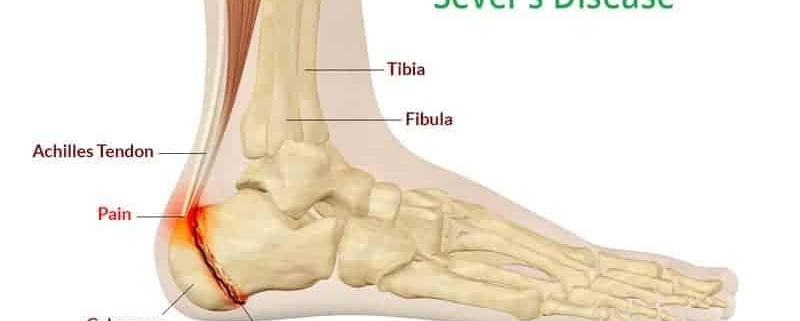
Sever’s Syndrome
Overview of Sever’s Syndrome
Sever’s Syndrome, also known as calcaneal apophysitis, is a common condition that affects children between the ages of 8 and 14. It is characterized by inflammation of the growth plate at the back of the heel. This condition typically occurs during growth spurts when the bones, muscles, and tendons in the foot are changing rapidly. With an estimated 16% of athletic children affected, it is the leading cause of heel pain in children.
Types of Sever’s Syndrome
Sever’s Syndrome primarily affects the heel, but symptoms can occur in various foot sections based on activities a child engages in. This condition does not have specific “types” but can vary widely in its severity and duration, depending largely on the child’s activity levels and other individual factors.
Causes of Sever’s Syndrome
Sever’s Syndrome is believed to be caused by repetitive stress to the growth plate in the heel, common in children who are very active or play sports. Factors that can lead to experiencing Sever’s Syndrome include:
-
- Overuse and stress on the heel from sports or physical activity
-
- Abnormal foot structure, such as flat feet or high, rigid arches
-
- Rapid growth spurts, common during adolescence
-
- Ill-fitting or non-supportive footwear
Symptoms of Sever’s Syndrome
The symptoms of Sever’s Syndrome tend to come and go over time. However, they usually include:
-
- Pain, swelling, or redness in one or both heels
-
- Difficulty walking, limping, or walking on toes to avoid heel pressure
-
- Pain during or after physical activities
-
- Tightness in the muscles of the leg or the Achilles tendon
Diagnosis of Sever’s Syndrome
Diagnosis typically involves a physical examination, evaluation of symptoms, and a review of the child’s medical history. Your doctor may apply pressure to the heel to assess the pain’s location and severity. Sometimes, an X-ray may be used to ensure that the discomfort isn’t due to a fracture.
Treatment Options for Sever’s Syndrome
The treatment for Sever’s Syndrome is aimed at relieving pain and reducing inflammation. Treatment options include:
-
- Rest and reduced physical activity
-
- Ice application to minimize swelling
-
- Pain-relief medications, usually over-the-counter anti-inflammatories
-
- Physical therapy, including stretching exercises
-
- In severe cases, a cast or walking boot may be used
Living With Sever’s Syndrome
Achieving a balanced lifestyle is key to managing Sever’s Syndrome. Here are some practical tips:
-
- Maintain a healthy weight to reduce pressure on the heel
-
- Wear supportive shoes that fit properly
-
- Gradually increase activity levels to avoid sudden stress on the heel
-
- Incorporate daily stretching habits targeting the muscles of the calf and foot
Remember, it’s okay to take a break. Encourage your child to rest if the pain becomes unbearable.
When to Seek Help
While Sever’s Syndrome is generally harmless, and the pain will go away with time and rest, there are instances when immediate medical attention should be sought. These include:
-
- Extreme pain or swelling in the heel
-
- Signs of infection like fever or redness
-
- Difficulty walking or standing
-
- If the pain doesn’t improve in a couple of weeks after beginning treatment
Reaching out to a healthcare provider under these conditions will reduce the risk of further complications.
